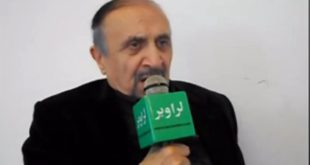

In recent times Pakistani political and military leadership has come around to the position where it is publicly accepting the fact that General Zia’s policy of supporting private Jihadist networks in 1980s was actually a fassad (turmoil) as according to them Jihad is sole domain of the state. Not only that. From General Musharraf’s “enlightened moderation” after 9/11 to the Zarb-e-Azb and National Action Plan (NAP) of 2014 and Operation Radul Fassad of 2016, military and political campaigns were launched one after another with the declared aim of eliminating the phenomenon of fassad. But unfortunately the country’s security establishment has stubbornly clung to an Afghan policy which is totally based on the very evil which the Pakistani state claims to be eradicating. This policy is basically aimed at supporting Taliban to fight a war of attrition against the Afghan state and society. By owning responsibility for the recent brutal terrorist attacks in Afghan urban centres, Taliban have given up even the pretence of being a serious political opposition of any sort. For supporting the demolition squad of Taliban now practically amounts to supporting the efforts for deconstructing the Afghan state and Afghan national identity. The result is rise of animosity with Afghans and growth of extremism and terrorism in the region without an end. Problem is that for exporting Talibanisation to Afghanistan its production line in Pakistan has to continue. That explains non implementation of NAP, active existence of the so called proscribed organisations and “mainstreaming” of organisations working for promotion of religious militancy.
Movers and shakers of the country’s Afghan policy have always depended on the strategy of living in denial. Non of the four wars fought in Afghanistan have ever been publicly owned. But this option is not available anymore. In the first week of March 2016, Mr. Sartaj Aziz as Adviser to the Prime Minister on Foreign Policy and National Security, publicly and on record admitted the fact about presence of Afghan Taliban leaders in Pakistan for the last so many years. Taliban’s “Emirate” revolves around its Amir and the “ Emirate” is where Amir resides. So going by the statement of the country’s top foreign policy and national security person, Pakistan has been hosting the Amir. In the last one year when Pakistan claims to have cleared its territory of all terrorists, US drones have been targeting lower Kurram Agency to hit Afghan Taliban commanders. Out of 13 drone strikes during the last one year, 9 have hit targets in Lower Kurram Agency and 4 have gone after targets in Waziristan. After most of the attacks, reports appearing in Pakistani media confirm the death of important commanders of Afghan Taliban. Which means sanctuaries of Afghan Taliban still exist inside Pakistan. Now even even in 2018 foreign terrorists are being attacked by foreign drones in Pakistan. Ironically some Pakistani leaders reject the idea of acting against Afghan Taliban on the ground that it will bring Afghan war into Pakistan but that’s exactly what they are doing by providing safe heavens to Taliban.
One is amazed to see some pro establishment media circles and analysts in Pakistan gloating over the “successes” of Taliban in Afghanistan. Interestingly these are the very people who will outrightly reject the reports of the “ infidel” western media on many subjects. But when the same western media publishes reports about the growing activities of Taliban in Afghanistan these “patriots” will enthusiastically quote such reports to prove the “invincibility” of Taliban. It’s particularly disappointing to watch mentors of Taliban celebrating these so called successes achieved through devastating suicide bombings in various Afghan cities.
But this is a very myopic policy with potential for creating the following serious security and political threats to Pakistan. One, the experience of the last four decades has proved that the ascendency of religious militancy in Afghanistan results in the rise of extremism and terrorism in Pakistan. It was not long ago that local and international terrorist networks were not only ruling FATA but they were expanding their control over different districts in Malakand Division. Traders in Peshawar, Islamabad and many other cities were forced to pay extortion money to Taliban. At one stage according to credible experts 40 per cent of Karachi was under the influence of Taliban. Why wouldn’t all this happen again? Two, the growing Talibanisation of the region will undermine regional peace creating serious security challenges to regional economic development projects such as CPEC, TAPI and CASA. Taliban is basically a security threat for this region which includes, apart from others, China and Russia also. US did topple Taliban’s regime in Afghanistan for providing sanctuary to OBL but US didn’t go for their total elimination which would have included elimination of their sanctuaries in Pakistan. Americans are angry at Taliban for killing their soldiers in Afghanistan and they would try to push them back to that extent. In the final analysis the task of tackling terrorist threat emanating from Taliban will be left to regional players including China and Russia. Three, naked and brazen Pakistani support for Taliban is creating immense hatred against Pakistan among the Afghan people. This process has particularly intensified after recent horrendous terrorist attacks in Afghan cities for which Taliban publicly claimed responsibility. As if this wasn’t enough the policy of pushing out Afghan refugees for creating chaos in Afghanistan in support of Taliban’s war is taking this animosity to new heights. It is even worse than the hostility that existed between Sikh Punjabi state and Durrani Afghanistan in the 19th century.
Four, the aforementioned bankrupt Afghan policy is creating alienation among Pashtuns in Pakistan because it is bringing war with large scale death and destruction, displacement ghettoisation to them. Five, the rise of local IS or Daish is yet another existential threat capable of turning this region into a battlefield by attracting players from outside. By now it is quite clear that far from being the actual branch of Middle Eastern IS it is just a side show of Taliban. It is meant to make Taliban look good by taking responsibility for some “undesirable” terrorist attacks. In eastern Afghanistan most of Daish’s cadres are from Pakistan and in northern Afghanistan it’s ranks are manned by Central Asian fighters. It’s needless to say that factors mentioned above originate from Pakistan’s flawed Afghan policy and they constitute an explosive mix. Again it’s not a coincidence that political government in Pakistan has been rendered totally incapacitated to have any say in foreign policy.
The writer is a retired Senator and an analyst of regional affairs.
 لراوبر ویب پاڼه لراوبر يو افغان – تازه خبرونه
لراوبر ویب پاڼه لراوبر يو افغان – تازه خبرونه


